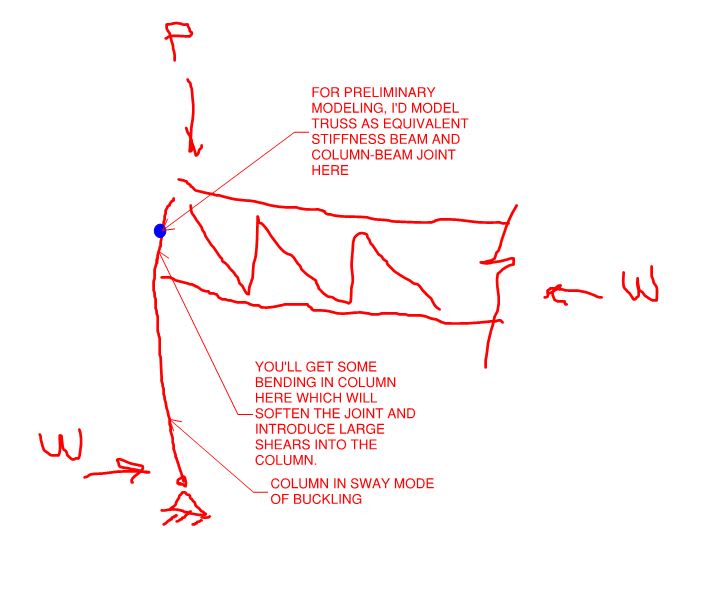Will high seismic be an issue for your project?
Will you be using the long span trusses on all six levels?
Mahi20 said:
May I know what the affect column-truss connection to prevent lateral buckling of columns.
Fundamentally, for low seismic applications, this won't be much different from the situation where your moment frames are common beam members. You can expect your column buckling in the plane of the trusses to be a sway mode of buckling. The main, additional wrinkle will likely be the additional flexibility in the joint owing to the additional deformation that will occur in the column between the top and bottom chords of the truss. See the sketch below. I think that the design approach that I'd take would be this:
1) Treat the truss as an equivalent stiffness beam for preliminary design;
2) Use a non-linear modelling method like AISC's Direct Design Method for final design. I wouldn't say this is mandatory or anything. Nowadays, it's not that hard to execute, however, and it would spare me the effort of trying to estimate the right K-factor for column buckling.
mahi20 said:
Similarly secondary trusses to main trusses connection has any issues?
I'd just keep in mind that your primary trusses are going to have zones of negative bending and your connections to your secondary trusses will likely be what prevents bottom chord compression buckling in those zones.
One last piece of advice that I'd offer is to keep an eye on the extent to which the connection between your column and the truss bottom chord will torsionally brace the column at that location. If you're using a prefabricated truss and an axial tab connection with a deeper column, the lack of torsional bracing at that location may result in a full column height torsional buckling mode governing your design.

